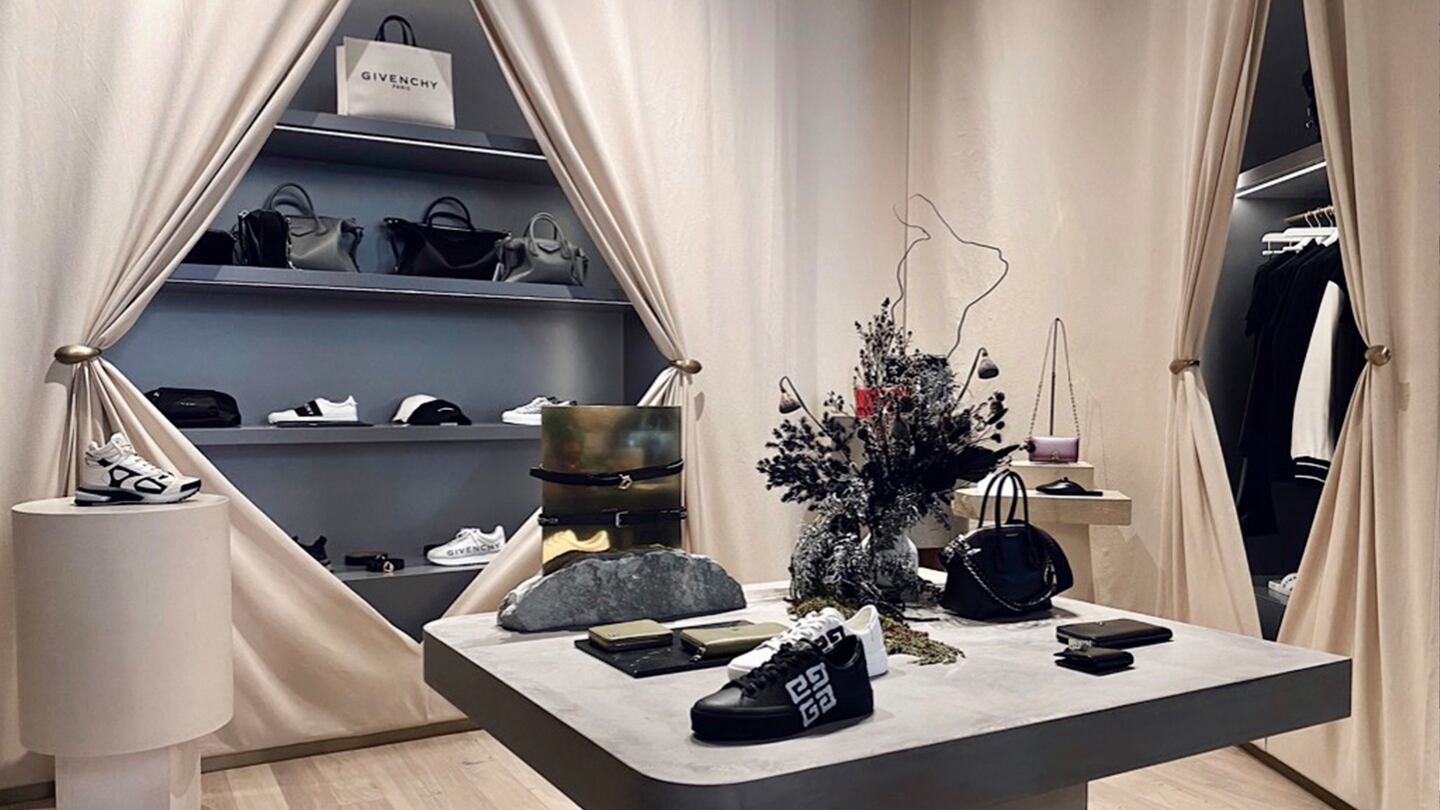
The Business of Fashion
Agenda-setting intelligence, analysis and advice for the global fashion community.

Agenda-setting intelligence, analysis and advice for the global fashion community.

In a boon for retailers, New Zealand will throw open its borders to travellers around the world on July 31, a move previously scheduled for October.
Tourists have already begun to trickle in after borders reopened to 60 visa waiver countries on May 2 including the US, the UK, Japan, and South Korea. That introduced potential international customers to a host of luxury fashion and jewellery brands, including Balenciaga, Burberry, and Van Cleef & Arpels, all of whom quietly set up shop in New Zealand for the first time during the Covid-19 pandemic.
With the acceleration of the broader reopening of international borders, retailers are feeling increasingly confident about the health of the local luxury market.
“As a brand that has a very global outlook, tourists returning to our shores most definitely have an impact on domestic sales,” said Jessie Wong, founder of local luxury leather goods brand Yu Mei.
ADVERTISEMENT
Retailers everywhere are looking forward to the return of tourists, but they are especially important in New Zealand. That’s due both to the role that the tourism industry plays in the national economy, and how tight the lockdown has been.
In March 2020, New Zealand implemented one of the strictest lockdowns in the world, earning it the nickname ‘Fortress New Zealand’. Borders were closed to foreign arrivals, and for the next two years, even Kiwis struggled to re-enter.
Overseas visitors fell from 3.6 million in 2019 to just 53,000 a year later. Foreign tourist spending, which had been New Zealand’s largest export industry, was decimated, collapsing from NZ $16.2 billion (US $10.1 billion) in the year to March 2020 to a measly NZ $1.5 billion the following year.

The loss of Chinese tourists, who spend more in New Zealand than visitors from any other country, was a major blow to luxury retailers. In neighbouring Australia, where their influence is comparable, Chinese tourists accounted for a whopping 30 percent of all luxury retail purchases prior to the pandemic, according to Deloitte. Wealthy travellers from other Asian countries are also an important source of revenue for luxury retailers in both Australia and New Zealand.
Local customers’ access to luxury stores was also interrupted by national lockdowns lasting anywhere from a few days to a month at a time. Shops in Auckland, the country’s largest and wealthiest city, were shut for 107 days following an outbreak of the Delta variant in the second half of 2021.
New Zealand’s broader clothing, footwear and accessories retail sector was hit hard, with sales in the quarter to June 2020 falling 24.3 percent from the same period a year earlier, according to government agency Stats NZ.
“When New Zealand was plunged into level four lock down, we knew we only had a few hours to come up with a digital lifeboat,” said Wong.
In just two weeks, she and her team put together the brand’s first digital event. “Pre-pandemic, we would have at least 400 attendees in a day; at our first digital event, we had 11,000 attendees and sold out in 16 minutes. Fast forward to 2022, and we have over 30,000 attendees at our digital events.”
ADVERTISEMENT
Yu Mei’s ability to maintain growth throughout the pandemic was impressive, but the New Zealand market as a whole has proven more resilient than expected. By late last year, there were signs of a recovery.
In the quarter to December 2021, the clothing, footwear and accessories retail sector recorded sales of $1.4 billion, eclipsing pre-pandemic sales of $1.2 billion during the same period in 2019.
At the same time New Zealand was turning away big-spending foreign tourists, struggling to keep its stores open to local shoppers and pivoting online, a surprising number of high-end fashion brands and retailers were busy setting up bricks and mortar stores.
The Commercial Bay development completed its opening in Auckland’s harbour-front central business district in June 2020. Among its 120 stores are boutiques by Kate Spade and Furla, as well as local label Superette.
According to Chris Wilkinson, managing director of retail consultancy First Retail Group, the opening of Commercial Bay also created rare opportunities for other retailers to find their locations.
“Overseas brands were able to take advantage of increasing availability of space in the premium part of Queen Street, while others bought long-established local brands to get a foothold into the market, such as Singapore’s Hour Glass, buying Mansors Jewellery and commercial property in this area,” said Wilkinson, whose firm represents brand clients with stores in Commercial Bay.
If the pandemic delayed some international luxury brands’ plans for New Zealand expansion, it didn’t derail them. Even those counting on international shoppers for a significant share of revenue for their Auckland stores went ahead in a sign of confidence in the future long-term health of the country’s travel retail and tourism market.
Van Cleef & Arpels opened its first New Zealand store in the Dilworth Building on the corner of Queen Street and Customs Street on May 20.
ADVERTISEMENT
“We decided to open in New Zealand more than three years ago and what was very important to us was to find the right location,” said Nicolas Luchsinger, Van Cleef & Arpels Asia-Pacific president, adding that the opening of the store is part of a long-term strategy in which tourists “only increase in the future with the popularity of New Zealand.”
But the French jewellery and watch brand is also relying on the newly discovered strength of a local customer who had previously been underestimated by many in the global luxury industry.
The local market will be especially important to new shopping developments that opened in city-fringe suburbs such as Parnell and Newmarket, a short drive from the Auckland’s central business district.

In 2021, Louis Vuitton, Saint Laurent, Balenciaga, Alexander McQueen, Moncler, Burberry, Jimmy Choo, Michael Kors, Coach and Gucci all opened at Westfield Newmarket. Some of these stores were the brands’ first outlet in the country.
Yu Mei also opened a store in Newmarket during the pandemic, adding to its stores in Wellington and Commercial Bay. The brand also partnered with Farfetch in 2021 to extend its online presence.
In the Parnell hills, luxury department store Faradays opened last year too, introducing brands such as Alaïa, Givenchy, Loewe and Christian Louboutin to New Zealand for the first time.
Edward von Dadelszen, the co-founder & chief executive of Faradays, said that far from dissuading him to open, the pandemic simply accelerated the timeline. He brought forward the launch of the online store on October 8 before the physical store opened on 11 November.
I think New Zealand has been ready for a superior luxury retail offering for quite some time. The data... is all testament to this.
“We saw the likelihood of the borders remaining shut for a length of time, with plenty of New Zealanders stuck here with very itchy feet and a lack of new retail or global-level experiences to explore,” he said, referring to the demographic of wealthy local consumers who traditionally do much of their luxury shopping abroad when they are away for business and leisure.
“I think New Zealand has been ready for a superior luxury retail offering for quite some time. The data, what New Zealanders were spending offshore before the borders shut, and our sales to date, is all testament to this.”
In the quarter to September 2020 alone, offshore spending by New Zealanders dropped by $1.7 billion according to Stats NZ as Kiwis cancelled plans to spend on travel, hotels and shopping abroad. A significant portion of that money instead went to local businesses.
The recent repatriation of luxury spend has given brands more confidence to move into the market, despite some lingering doubts about New Zealanders’ interest in luxury.
“I think until now, the sophisticated New Zealand consumer has been largely underestimated,” von Dadelszen said. “[But ever] since the internet democratised the global fashion industry … New Zealand luxury shoppers are now global luxury shoppers, with the same access to this information as anyone else around the world. It’s time we catered to them.”
Wilkinson agrees: “It’s a long-held misnomer that overseas consumers are the ones exclusively fuelling luxury retail. For the brands here [in New Zealand], locals are a very big part of the customer base for retailers in Auckland, while, understandably Auckland International Airport and Queenstown [stores] are very-much reliant on the visitor market.”
Thanks to the strength of the local customer, new luxury retailers like Farradays and Westfield Newmarket, a property majority-owned by Australia’s Scentre Group, have established themselves as desirable shopping destinations even without tourists to boost their numbers. And, according to Wilkinson, “neither venue will have been able to truly determine its full potential yet.”
The resilience that the New Zealand market has exhibited will continue to benefit luxury retailers while they wait for international customers to return – but it will take time for tourism to rebound. Most airlines haven’t yet resumed normal operations; cruise ships are yet to return to ports in cities such as Auckland, Tauranga, Wellington and Christchurch, and travel costs remain prohibitive for many routes.
In April, Tourism New Zealand’s chief executive Rene de Monchy said revenue from foreign visitors over the next 12 months would reach just 20 to 25 percent of what it was prior to the pandemic. He predicted that it will take more than three years for international tourism to recover to pre-Covid levels.
But industry leaders appear confident that the timeline could be shorter for the luxury sector. In BoF and McKinsey’s State of Fashion 2022 report, Benjamin Vuchot, chairman and chief executive of luxury travel retailer DFS Group said that Australia and New Zealand would be among the first countries to benefit when global tourism does finally return. New T Galleria stores in both countries are set to open by 2023.
Meanwhile, luxury players would do well to invest more in highly targeted local marketing campaigns to tap growing demand from new customers and to upgrade their customer relationship management strategies to get better acquainted with existing New Zealander clients who have been under the radar for so long.
Wealthy tourists are key to the recovery of the Australian luxury market but analysts predict that the sector won’t return to pre-pandemic levels until next year.
After 12 weeks in lockdown, Auckland has downgraded its Covid-19 restrictions so that malls and retailers can reopen today, sparking lines outside
Though e-commerce reshaped retailing in the US and Europe even before the pandemic, a confluence of economic, financial and logistical circumstance kept the South American nation insulated from the trend until later.
This week’s round-up of global markets fashion business news also features Korean shopping app Ably, Kenya’s second-hand clothing trade and the EU’s bid to curb forced labour in Chinese cotton.
From Viviano Sue to Soshi Otsuki, a new generation of Tokyo-based designers are preparing to make their international breakthrough.
This week’s round-up of global markets fashion business news also features Latin American mall giants, Nigerian craft entrepreneurs and the mixed picture of China’s luxury market.